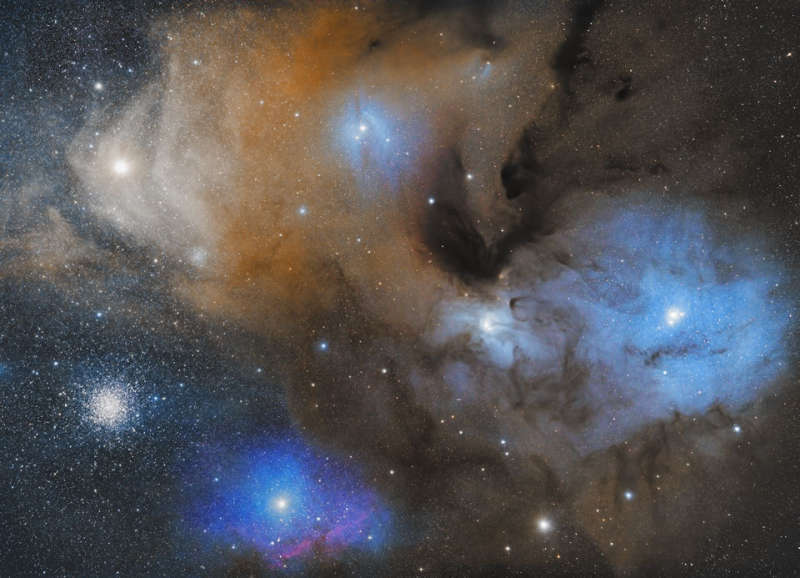
|
Credit & Copyright: Rafael Defavari
Explanation:
The many spectacular colors of the
Rho Ophiuchi
(oh'-fee-yu-kee) clouds highlight the many processes that occur there.
The blue regions shine primarily by reflected light.
Blue light from the star
Rho Ophiuchi
and nearby stars reflects
more efficiently off this portion of the nebula than red light.
The Earth's
daytime sky appears blue for the same reason.
The red and yellow regions shine primarily because of
emission from
the nebula's atomic and molecular gas.
Light from nearby blue stars - more energetic than the bright star
Antares - knocks
electrons
away from the gas, which then shines when the electrons
recombine with the gas.
The dark brown regions are caused by
dust grains - born in young stellar atmospheres -
which effectively block light emitted behind them.
The Rho Ophiuchi star clouds,
well in front of the
globular cluster
M4 visible
above on lower left,
are even more colorful than
humans can see - the
clouds emits light in every
wavelength band from the
radio to the
gamma-ray.
Budget Universe:
Free APOD 2014 Calendar in PDF format
|
January February March April May June July August September October November December |
| |||||||||||||||||||||||||||||||||||||||||||||||||||||||
NASA Web Site Statements, Warnings, and Disclaimers
NASA Official: Jay Norris. Specific rights apply.
A service of: LHEA at NASA / GSFC
& Michigan Tech. U.
Based on Astronomy Picture
Of the Day
Publications with keywords: dust - reflection nebula
Publications with words: dust - reflection nebula
See also:
